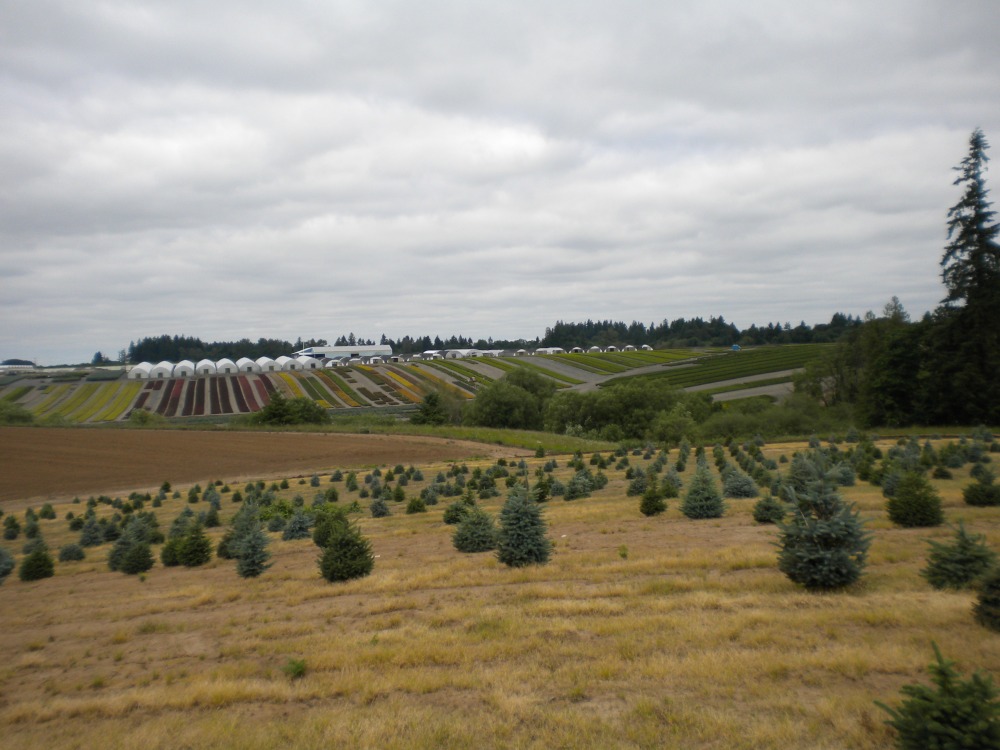…and the blues, bluer.
I’ve returned from Oregon, and, as expected, the weather was delightful. Last week, as Virginia experienced record heat and suffocating humidity, Oregon was experiencing it’s hottest and sunniest stretch this year, but twenty degrees cooler than here, and without a noticeable trace of humidity.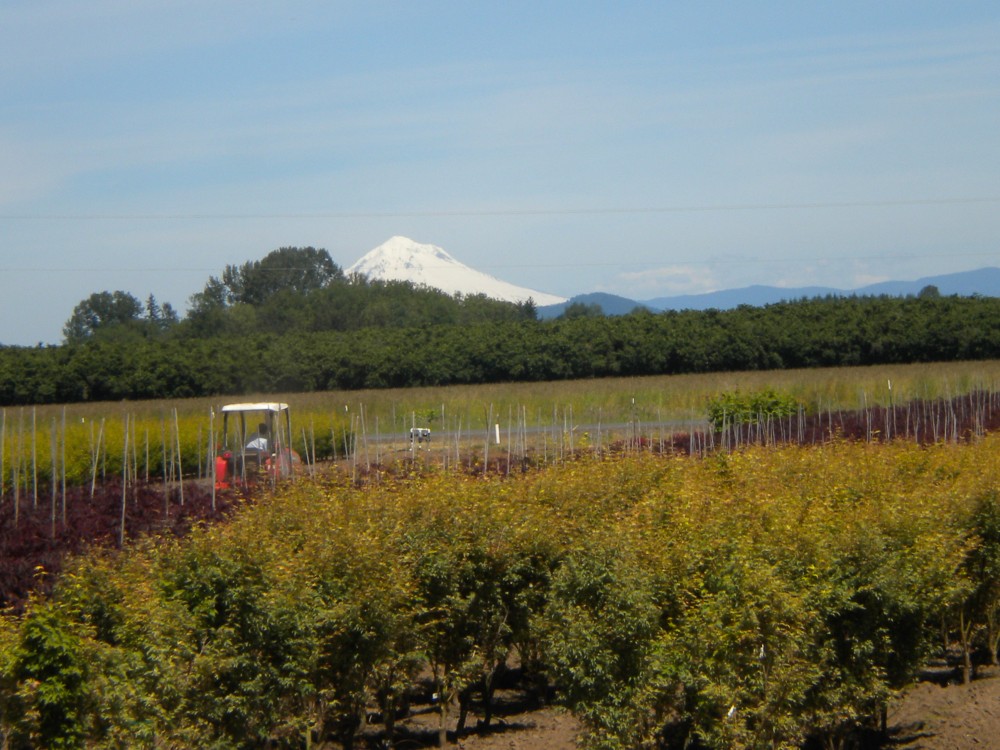
It should not be a surprise that plentiful spring rains, cool weather that extends through June, low humidity, and cool summer nights contribute to growing plants quickly, and this is the secret of the Oregon nurseries. In June and July the difference in foliage color in Oregon compared to plants growing in the heat and humidity of Virginia is striking. Red leafed Japanese maples will often fade in the heat of summer, particularly in the first year they are planted, but in Oregon the colors remain true until frost, with only a bit of fading.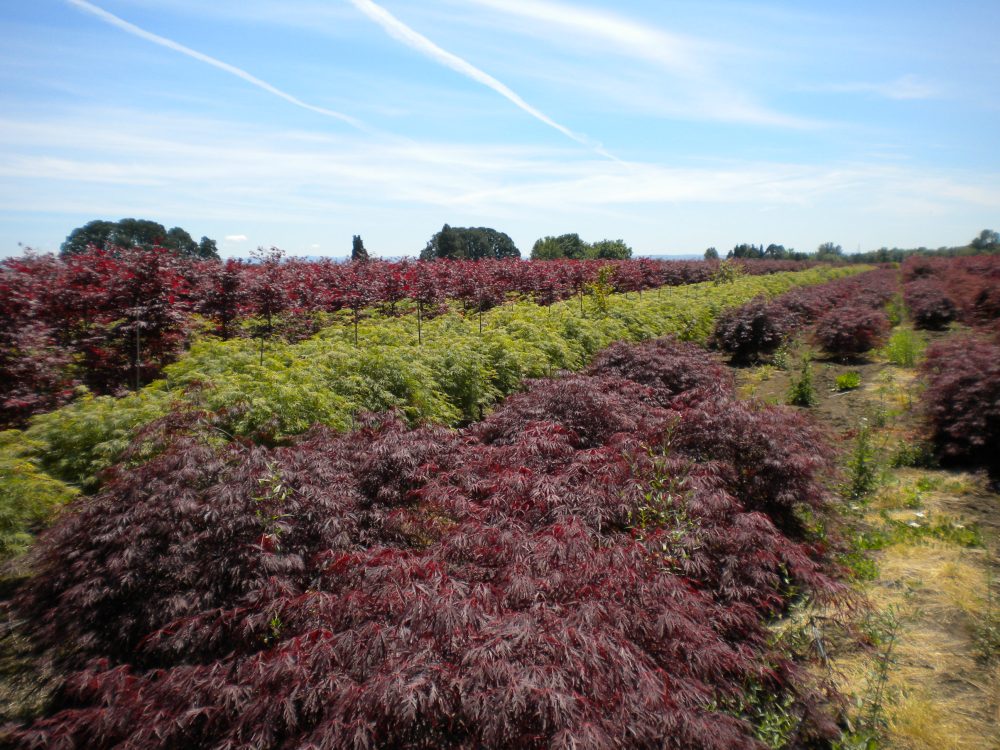
Gold leafed and needled plants will often scorch, and some will not survive the harsh summer conditions of the mid-Atlantic region, but in the northwest low humidity and cooler summer nights allow plants to grow stress free. They grow quicker, and colors are more vibrant.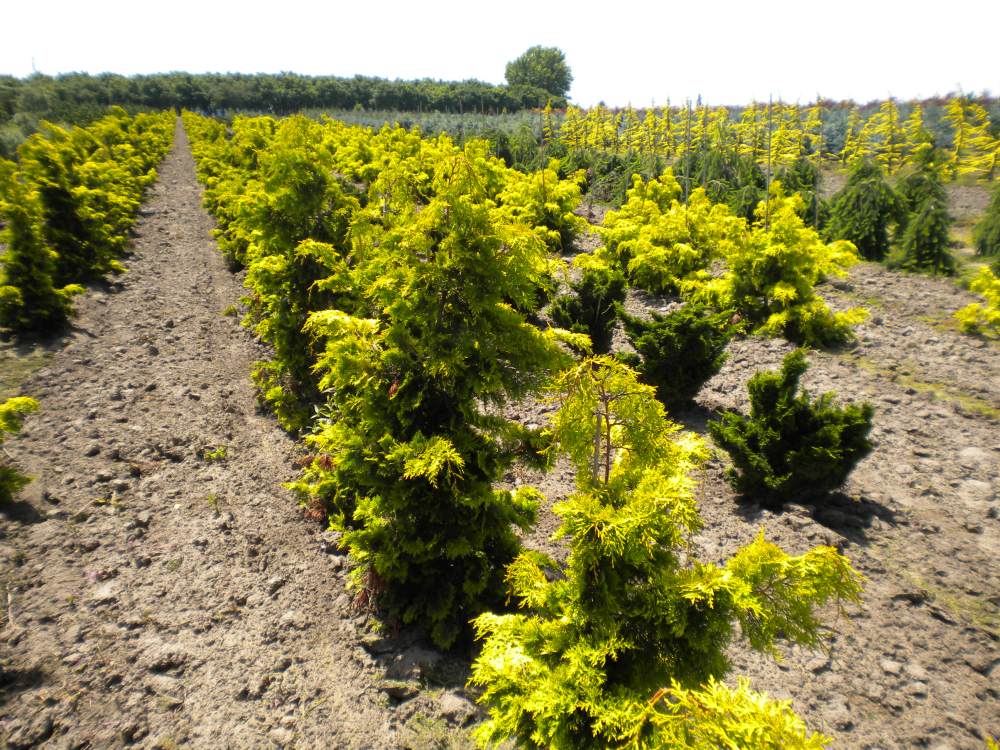
 On the other hand, Oregon nurseries grow mediocre azaleas, Japanese hollies, and dogwoods that prefer heat and humidity to grow at their best. The late blooming pink Stellar Pink and other Rutgers hybrids (crosses between our native dogwood, Cornus florida, and Chinese dogwood, Cornus kousa) and Satomi dogwood (Cornus kousa ‘Satomi’) are exceptions that grow as well in either climate, but the flower color of Stellar Pink and Satomi is dependably pink to almost red in the northwest, while most years in Virginia the flowers are nearly white with only a hint of pink (Satomi, above in Oregon last week, below in Virginia).
On the other hand, Oregon nurseries grow mediocre azaleas, Japanese hollies, and dogwoods that prefer heat and humidity to grow at their best. The late blooming pink Stellar Pink and other Rutgers hybrids (crosses between our native dogwood, Cornus florida, and Chinese dogwood, Cornus kousa) and Satomi dogwood (Cornus kousa ‘Satomi’) are exceptions that grow as well in either climate, but the flower color of Stellar Pink and Satomi is dependably pink to almost red in the northwest, while most years in Virginia the flowers are nearly white with only a hint of pink (Satomi, above in Oregon last week, below in Virginia).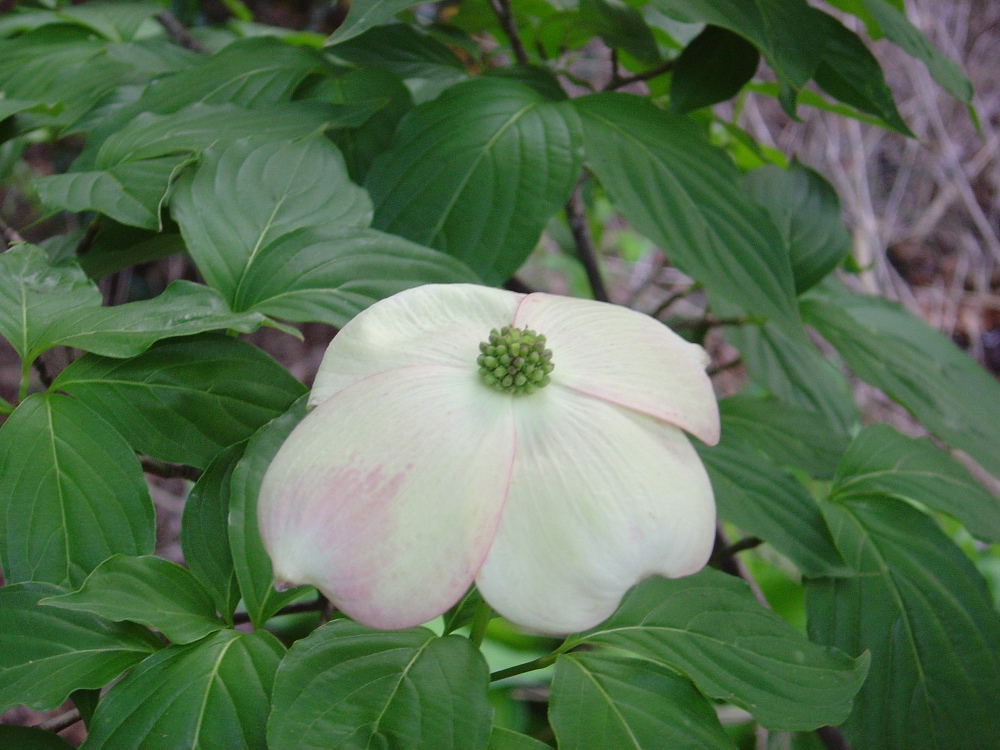
Blue spruce are as colorful on the west coast as in the east, but with deep, volcanic topsoil and ideal weather the evergreens grow more quickly. Oregon ships a majority of the plants it grows to the east, and trucking is expensive, so most nurseries grow selected grafted spruce to insure that every tree is consistently blue. Spruce grown from seed (rather than those grown from a graft) will exhibit a range of needle colors from green to sky blue, and of course the blue are more desirable. 
With a long growing season, moderate temperatures, and great soil Oregon is an amazing agricultural state, growing fruits and berries, vegetable crops and grass seed, as well as being the prime growing area for Japanese maples and spruce. The state has also become one of the major sources for a staple of the mid-Atlantic and northeast nursery trade, boxwoods, grown by the thousands in every variety imaginable.
My annual journey to visit Oregon nurseries is a highlight of the year, and when the weather is as sweltering as last week it is all the more enjoyable. I’d be happy to go back tomorrow, and return home in September. 